A few months ago, NZXT introduced a new case for their Source series. The Source series is primarily geared toward budget conscious builders. It doesn’t have the bells and whistles that their H series and Phantom series have. But it has the key features and the essential elements to house all your components, in a simple yet elegant way. Today we are going to look at the new member of the Source family – the NZXT Source 340 mid tower case, or S340 for short. The NZXT S340 seems to be a trimmed down version of their popular H440. Both share a simplistic and minimalistic concept. The PSU is covered with a shroud, and the front panel doesn’t have any slots. If you are looking for a smaller, cheaper version of the H440, or you are simply looking for a clean, simple and compact case, stick around and check out my NZXT Source 340 review. This could be the case you are looking for.
NZXT S340 Features
Clean Creations
Axing the optical bays and relocating the HDDs to a lower position opens the case up like never before, making this one of the easiest cases to build in ever. A grommet-less cable management solution, alongside over twenty zip-tie locations, and plenty of space behind the motherboard tray give you unprecedented cable management options for a mid tower case.
Excellent Cooling
When it comes to keeping cool, the NZXT Source 340 (or S340) is no slouch. With Kraken X61 compatibility in the front intake, X31 compatibility in the rear exhaust, and a total of up to three 140mm or for 120mm fans you have plenty of chilling options. Thick front panel cutouts allow unrestricted airflow to reach our fully filtered intake.
Durable Construction
The NZXT S340 comes with the standard accoutrements that you would expect from a premium case, such as USB 3.0, filtered intakes, a PSU shroud, and quality materials. Easily one of the most durable cases we’ve ever made, the S340 boasts 360 degrees of steel casing, extremely minimal plastic use, and extra thick side panels.
Compact Form Factor Without the Sacrifice
The extremely compact mid tower form factor sits significantly further shorter length-wise to allow you to fit the case into harder to fit areas and carry the case around much easier without sacrificing compatibility or performance.
Uncompromised, Minimalist Style
The S340 combines an uncompromising approach to chassis design and pure, minimalist style to set the new standard for the Source series and offer builders, enthusiasts, and gamers the essence of pure practicality.
NZXT S340 Specifications
| Model Number | CA-S340W-W1 (White) CA-S340W-B1 (Black) |
| Drive Bays | External 5.25": 0 Internal 3.5": 2+1 Internal 2.5": 2 |
| Cooling System | Front: 2x 140/3x120mm Top: 1x 140/120mm (1 x 120mm FN V2 Fans Included) Rear: 1x 120mm (1 x 120mm FN V2 Fan Included) |
| Filters | Front (Included) Bottom Rear(Included) |
| Radiator Support | Front 2 x 140 or 2 x 120mm Rear 1 x 120mm |
| Clearance | GPU Clearance With Radiator: 334mm GPU Clearance Without Radiator: 364mm CPU Cooler: 161mm Cable Management: Lowest Point - 17mm; Highest Point 168mm |
| Dimensions | 200mm x 445mm x 432mm |
| Material | SECC Steel, ABS Plastic |
| Motherboard Support | Mini-ITX, MicroATX, ATX |
| Expansion Slots | 7 |
| External Electronics | 1x Audio/Mic 2x USB 3.0 |
| Product Weight | 7.05 kg |
| UPC | 15671012111 (White) 15671012128 (Black) |
| USB 3.0 Ports | 2 |
| Warranty | 2 Years |
The NZXT S340 From Outside
Just like the H440, the NZXT S340 has a big window on the left side panel. The front, both sides, and rear portions are finished with a nice glossy black paint. It’s not really the ultra-glossy type like what you see on some LAN party or RIG showcases, but it’s glossy enough to reflect its surroundings. Aside from being glossy, it’s also very finger print magnet.
As you can see there is no external drive bay, just like the H440. It’s very clean looking, simple, and the action really starts when you look through the windows on the left side panel.
The rear portion of the NZXT S340 has a glossy finish as well. You can also see that there are lots of ventilation holes. Notice that there is an opening on the thumbscrew portion of the PCI slots. This makes it easy for you to screw/unscrew components on the PCI slots.
The power supply is mounted from the rear. You remove the rear frame and screw it on your PSU. After that you slide the PSU in from behind. You can’t access your power supply and its cable from the left portion. Everything is done on the other side of the case.
Going back to the front portion, there is a discrete NZXT logo on the mid-lower section of the front panel. The power button, together with two USB 3.0 ports, mic/headphone ports and a HDD activity indicator are located on the front top portion of the case.
You can also see from this angle a gap that goes all the way to the bottom of the NZXT S340. Depending on the configuration of your front fans, air can go in or out through this gap. You can also remove the front cover by putting your fingers between the gaps and pulling the front cover towards you.
Only the top portion of the NZXT S340 does not have a glossy finish. Rather, it has a nice flat black matte finish. That smooth matte black finish extends inside the internal of the case. Looking on what’s under the Source 340, we see four feets, tall enough to give clearance from the floor. There’s a removable dust filter for the power supply, and surprisingly the bottom portion has a glossy finish as well. I don’t really see the need for the bottom portion to be glossy, since you can’t see it at all at the first place.
Now let’s remove the sides and front panels, and take a closer look inside.
Inside the NZXT S340
The front panel of the NZXT S340 can easily be removed simply by pulling the front panel towards you. It will immediately reveal a removable dust filter, with magnets on its corners. Removing the dust filter reveals two holes for a 120mm or 140mm fan. You can also install a 240mm or 280mm radiator in front. But depending on the thickness of the radiator with fans, you might have to remove something from within the case. I’ll show it to you next.
On the lowest portion you see tiny holes. Those holes serve as air ventilation for the hard drives. I think NZXT has forgotten to place a fan mount so that you can install a small fan to cool the hard drives.
First photo on the left reveals most of the internals of the NZXT S340. You can see a large hole on the motherboard for easy installation of CPU bracket. There is a shroud on the lower section that completely covers the power supply and the hard drive cage. On top of the shroud are removable slots for two 2.5-inch SSD. You also get two 120mm stock fans that are installed on the top and rear portion of the Source 340.
Right above the hard drive cage, you will see a black glossy metal bar with NZXT’s logo on it. Aside from giving the internal of the S340 some highlights, it actually serves as a shroud for the cables coming from behind the case. This glossy shroud can be removed specially if you need to install a thicker radiator with fan for CPU or GPU cooling. I wasn’t able to install the NZXT Kraken X61 because of this shroud. It’s slightly on the fan/radiator’s way by a few millimeters overlap.
On the back portion of the motherboard tray, you can see a bunch of cables for the front I/O ports. Notice that those cables are completely invisible, thanks to that glossy shroud.
Above you see several angles of the NZXT S340 without the covering panels.
Let’s take a closer look on what’s on the other side of the shroud of the NZXT S340. It feels very similar with the H440. From here, you can install two hard drives and from the rear portion is where the power supply will be coming in. You can also see that there is an enough room to support longer power supplies, like 1000W and above. There are holes for the ventilation of the power supply. Also notice that even if you don’t really see this portion of the case once covered, the bottom floor has a glossy finish.
Now let’s put some components inside and see how it will look like with a finish build.
NZXT S340 with Installed Components
In this NZXT S340 build, I installed an Asus Maximus Impact VI inside. I used the Enermax LiqTech 240 CPU water cooler since the Kraken X61 won’t simply fit without removing the vertical shroud for the cables. The graphics card I used is the Gigabyte GTX 750 Ti OC. There are two SSD on the bottom; they are the Kingston HyperX Fury and Silicon Power S60 respectively.
Obviously, that is not the best cable management, but that’s how it will look like without doing much cable management. I’m sure it will look cleaner and nicer if a proper and thorough cable management is done.
The NZXT S340 can accommodate full ATX motherboard, including full sized graphics cards. There are 7 PCI slots, this means that a 3-Way SLI or CrossFireX is possible within this case. There are holes on the rear portion for the SSD drives, and there’s even a hole right beside the first SSD. That’s probably for the PCIE power cable.
Removing the front cover again, here’s how it will look like with a radiator installed. You can do a push or pull setup, but it was difficult to put the fans first with the Liqtech 240. So what I did, I screwed the radiator in front of the case, and the two 120mm fans are screwed on the radiator from the inside.
Again, here are angled views of the NZXT S340 with the components installed. There are enough holes where you can tie your cables properly. Once covered, it will look really neat and clean from the inside. All the cables are well hidden on the back of the case.
Price and Availability
The NZXT S340 (Source 340) mid tower case is now widely available. It comes with a retail price of $69.99 (as of today). It’s available in glossy Black, like the one above, or glossy White. It also comes with a 2 year warranty from the manufacturer.
NZXT S340 Case Review: Conclusion
When the NZXT S340 was first revealed to the public, there were actually mixed reactions. There are some that liked the simplistic and minimalistic approach, while others sees it as a so-so case, or a boring case. I personally consider a PC case or chassis as a matter of personal preference. A particular case from a particular company might be good for you, but not for me, or the other way around. So what do I think about the NZXT S340?
I like the simplistic and minimalistic design of the NZXT S340. It’s very discrete and the focus is more on what’s inside (installed components) the case, rather on the external of the case. I didn’t encounter any problems with putting all the components inside the case. The top matte finish is smooth to touch and I also like that they didn’t made it glossy so that you can put things on top of the case. If they did make the top portion glossy, you can’t probably put stuff on it since it would be very prone to scratches.
Cable management is also not a problem with the Source 340. There are lots of rooms for cable management and you can easily hide cables behind the motherboard tray. I also like the matte finish inside the case and only the vertical shroud has the glossy finish. This gives a good mix of texture and feel inside and outside the case. And remember, this case is cheaper than its bigger brother the H440. But there are some minor things that I think NZXT should have implemented.
The only issue I have with the NZXT S340 is its hard drive cage. It’s not tool less and it’s an effort to install hard drives if they are not tool less. There are also no anti-vibration pads for the hard drives. And there is no way for you to cool the hard drives. Probably you can insert a small 80mm fan somewhere to cool the hard drive, but there are no fan mounts for that.
The hard drive cage is really not a deal breaker. You can remedy it if you are creative enough, or simply leave it as is. Plus for the asking price, it’s really a steal or great deal already. I was initially aiming for the H440 designed by Razer, but when I tried the S340, now I’m leaning towards the S340. It’s a compact mid tower case, it saves you not only a few bucks, but some space on your desk (or underneath it) as well. If you are building your first gaming rig, or looking for a compact mid tower case, or you simply want something that looks simple yet elegant, then look no further because the NZXT S340 might be that case you are looking for. Finally, I find the Source 340 worthy of The PC Enthusiast’s Editor’s Choice award.

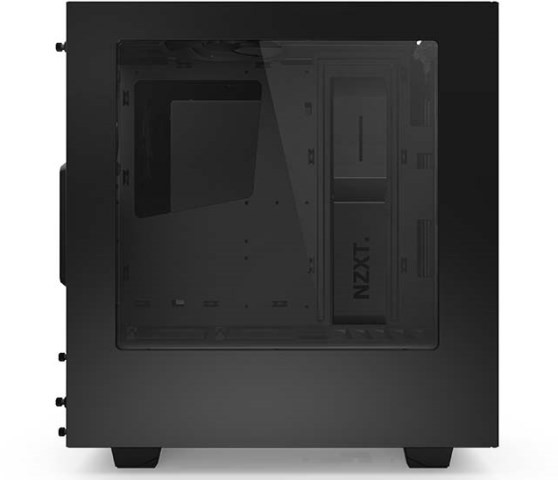
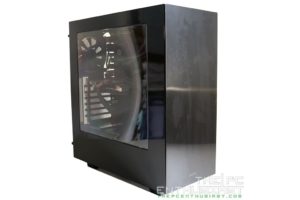
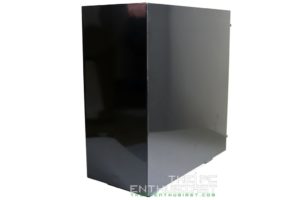
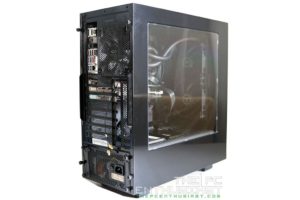
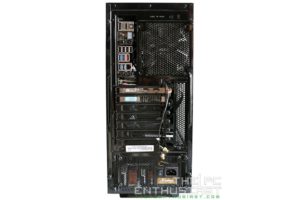
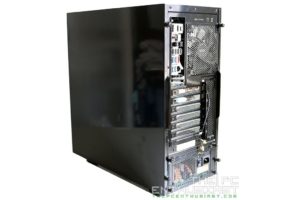
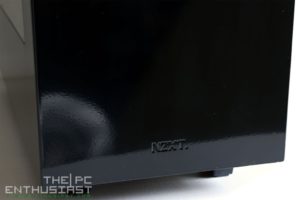
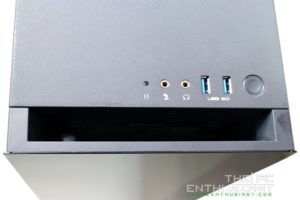
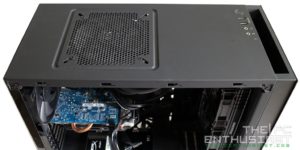
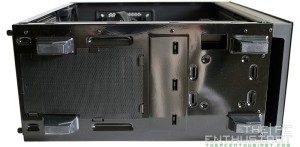
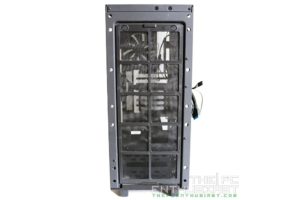
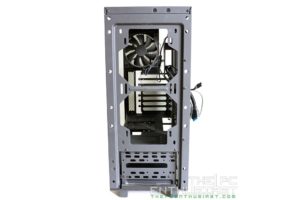
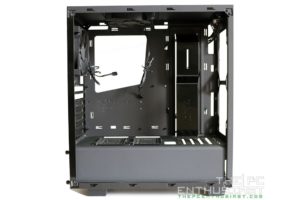
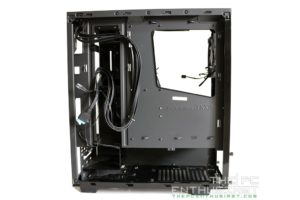
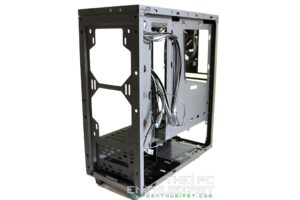
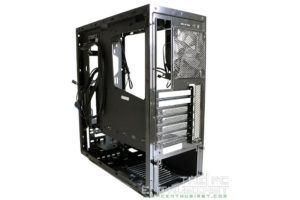
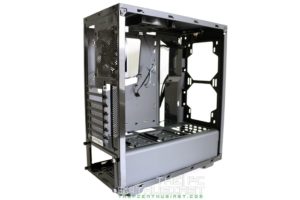
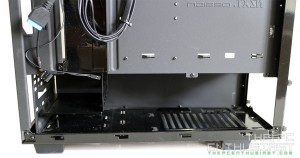
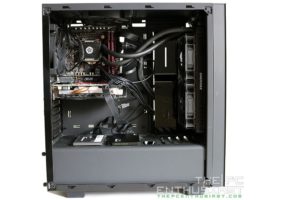
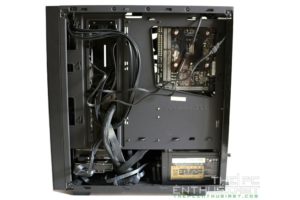
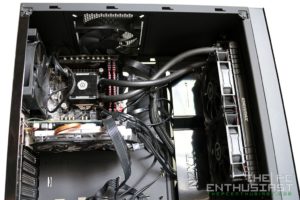
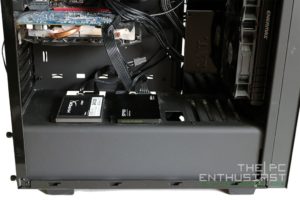
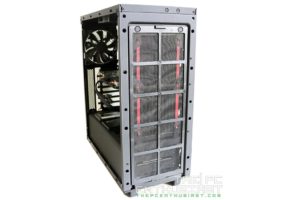
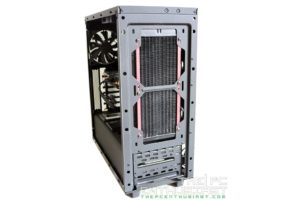
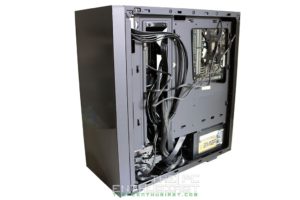
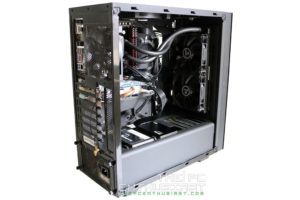
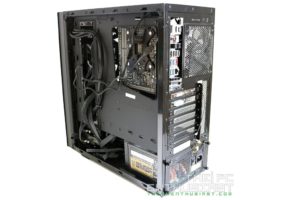

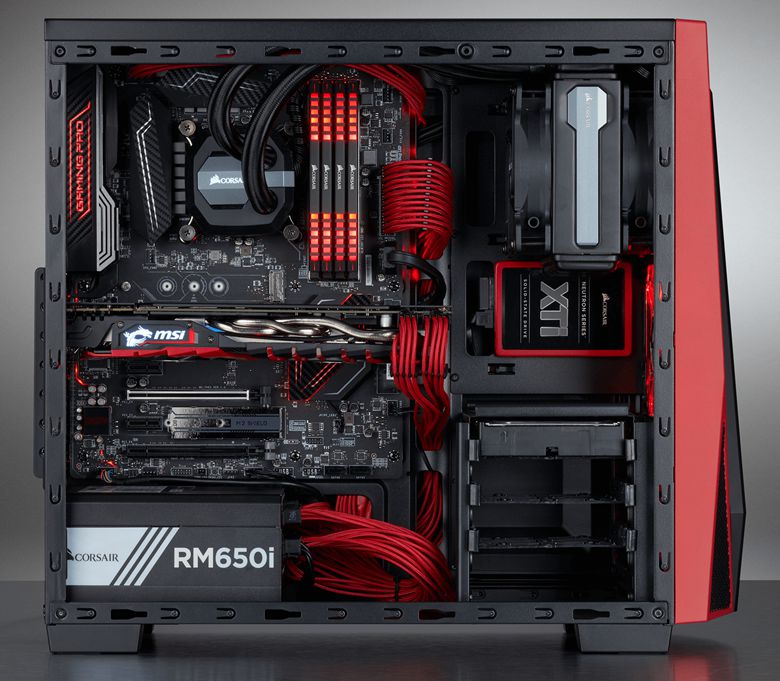
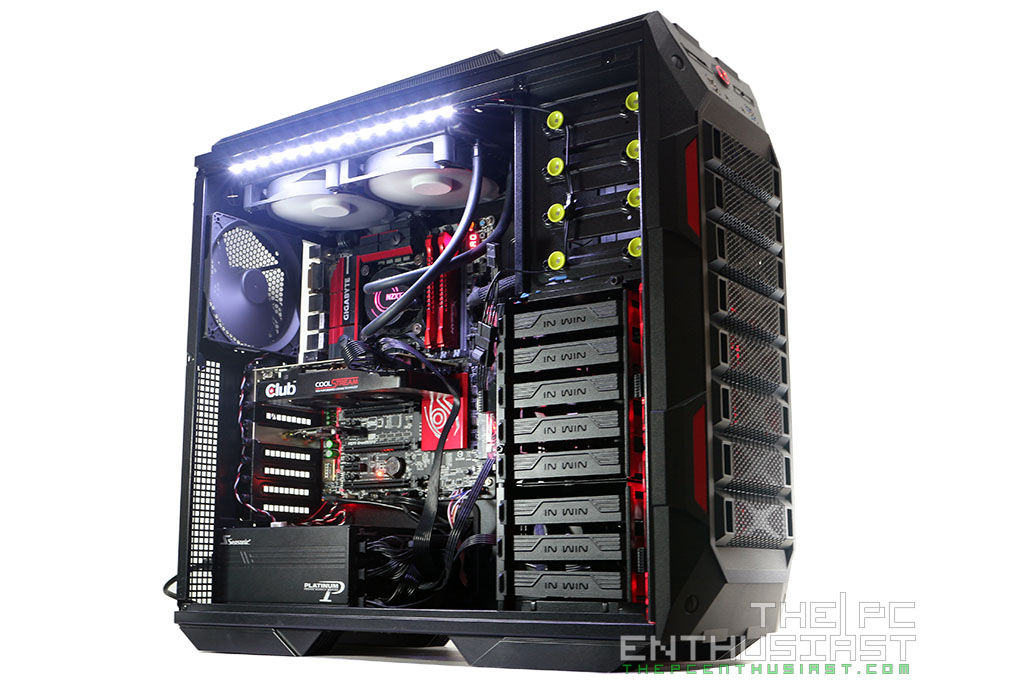
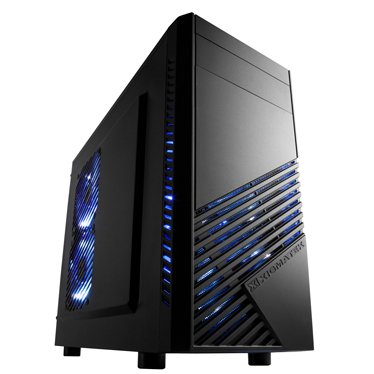


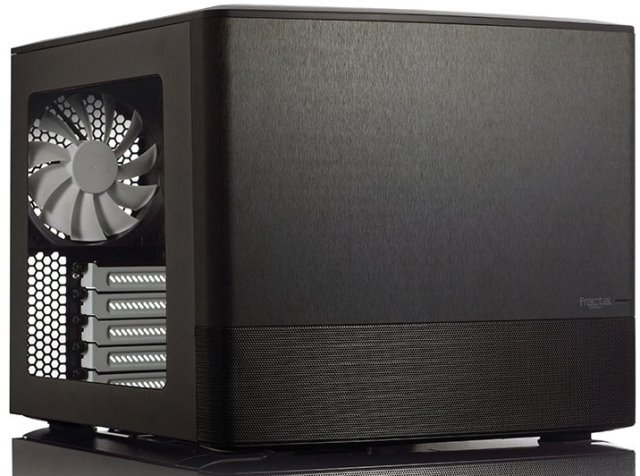

Amazing case. More of those please. I’ve been looking for a simple white box for so long. The market is oversaturated with “pigeon in a blender” cases, and timeless simplistic ones are really hard to come by. I see myself keeping it forever. Besides, I fit a full-atx motherboard in (with squiggly white piece removed), and just upgraded to gigantic RTX 3090, so it is future-proof. Also, I saw people squeezing Noctua NH-D15 chromax.Black in, which is about as huge of CPU cooler as you could find.
The only issue – turbulence sounds behind the front panel. I had to do some redneck engineering to solve it.
Yes, I think currently the trend is going towards air flow. That’s why a lot of PC chassis these days look very similar and with lots of ventilation holes or mesh.